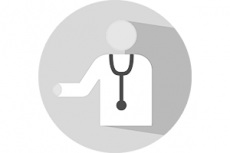
All iLive content is medically reviewed or fact checked to ensure as much factual accuracy as possible.
We have strict sourcing guidelines and only link to reputable media sites, academic research institutions and, whenever possible, medically peer reviewed studies. Note that the numbers in parentheses ([1], [2], etc.) are clickable links to these studies.
If you feel that any of our content is inaccurate, out-of-date, or otherwise questionable, please select it and press Ctrl + Enter.
Muscles of the upper extremity
Medical expert of the article
Last reviewed: 04.07.2025

The great variety and freedom of movement of the hand as an organ of labor are provided by the structural features of the joints of the upper limb, which are affected by numerous muscles. The nature of the connection of the skeleton of the shoulder girdle with the body is important, as well as the presence of the corresponding muscles, originating from the vertebrae, ribs and sternum and attached to the bones of the upper limb.
According to the structure of the skeleton and the functions of the upper limb, its muscles are divided into:
- muscles that originate from the spine;
- muscles that originate from the ribs and sternum;
- muscles of the shoulder girdle;
- muscles of the free upper limb - shoulder, forearm and hand.
The muscles originating from the spine (trapezius, latissimus dorsi, rhomboid major and minor, levator scapulae) and those originating from the ribs and sternum (pectoralis major and minor, subclavius, serratus anterior) have been described along with other muscles of the back and chest. This section covers the muscles of the shoulder girdle and free upper limb.
Shoulder muscles
The shoulder muscles are divided into two groups according to the topographic-anatomical principle - anterior (flexors) and posterior (extensors). The anterior group consists of three muscles: coracobrachialis, biceps brachii and brachialis; the posterior group - triceps brachii and olecranon. These two muscle groups are separated from each other by plates of the proper fascia of the shoulder: on the medial side - by the medial intermuscular septum of the shoulder, on the lateral side - by the lateral intermuscular septum of the shoulder.
Forearm muscles
The muscles of the forearm are numerous and have a variety of functions. Most of the muscles are multi-joint, since they act on several joints: the elbow, radioulnar, wrist, and the distal joints of the hand and fingers.
The muscles of the hand are divided into 3 groups:
- muscles of the thumb (lateral group), which form a well-defined elevation of the thumb (thenar) in the lateral region of the palm;
- muscles of the little finger (medial group), which form the eminence of the little finger (hypothenar) in the medial region of the palm;
- the middle group of muscles of the hand, located between the two specified muscle groups, as well as on the back of the hand.
Upper limb movements
Movement of the scapula and clavicle in the sternoclavicular and acromioclavicular joints. The scapula and clavicle are raised by the levator scapulae muscle, rhomboid muscles, sternocleidomastoid muscle, and trapezius muscle (upper bundles). The scapula and clavicle are lowered by the trapezius muscle (lower bundles), serratus anterior muscle, as well as the pectoralis minor and subclavian muscles.
Forward and lateral movements of the scapula: serratus anterior, pectoralis minor and pectoralis major (with the participation of the humerus).
Posterior and medial movements of the scapula (towards the spine): trapezius muscle, rhomboid muscles, latissimus dorsi muscle (with participation of the humerus).
Rotation of the scapula around the sagittal axis: the lower angle of the scapula is rotated outward by the serratus anterior (lower teeth) and trapezius (upper bundles) muscles, medially (towards the spine) - by the rhomboid major muscle and the pectoralis minor muscle.
Использованная литература


 [
[